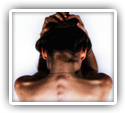
Idiopathic Scoliosis and Musculoskeletal Complaints Improved with Chiropractic
Print Article

A case study documenting chiropractic helping to improve a patient suffering with idiopathic scoliosis and musculoskeletal complaints was published in the January 25, 2018, issue of the Annals of Vertebral Subluxation Research. The patient also experienced an improved state of well-being as a result of the chiropractic care.
The word scoliosis comes from the Greek word skolios, which means twisted or crooked. A diagnosis of scoliosis only means that there is an abnormal curvature of the spine from side to side of more than 10 degrees. Adolescent idiopathic scoliosis (AIS) is a spinal curvature that shows up about the onset of puberty but before maturity.
AIS shows up at a rate of up to 5.2% of the adolescent population with girls having this issue more commonly than boys. Measuring spinal curvature requires a specific procedure that results in a measurement known as the Cobb angle.
The authors of this study also reviewed other studies on scoliosis and chiropractic. These studies also showed improvement of scoliosis with chiropractic as measured using the Cobb angle. In one case, a 15-year-old girl improved from a Cobb angle of 46° to 30° in 18 months, and she was able to avoid a planned surgical intervention. Another case involved an 10-year-old girl whose curve improved from 35° down to 25° as verified by an independent medical radiologist. Overall, in the 12 studies that the authors of this study reviewed, all showed a significant reduction of the Cobb angle after several months of chiropractic care.
In this case, a 21-year-old woman presented herself for chiropractic care. She was complaining of low back pain with radiating numbness into legs and feet when lying on her back, as well as daily headaches. She reported that the problems began four years earlier while she was a cheerleader and doing gymnastics in high school. Standing, sitting, bending, and lifting all seemed to make her problems worse. On a scale of 0 to 10, with 10 being the worst, she rated her lower back pain as an 8. When she would lie down for over an hour, she would experience numbness in her legs and feet. Her headaches would occur about three times per week. X-rays she had done a year prior showed a scoliosis with a Cobb angle of 20°.
Based upon a chiropractic examination which included palpation, range of motion, thermal studies and a sEMG of the woman's spine, it was determined that subluxations were present. Regular specific chiropractic adjustments were started to address the findings.
Five months after chiropractic care was started, follow-up x-rays were taken at the same facility as the original studies were done. The x-rays showed a reduction of the curvature from 20° to 12.5°. Additionally, the patient reported much improvement in all of her pain symptoms.
The authors of the study explained how the correction of subluxations can have a positive effect on the body. "Regardless of the technique used, a majority of chiropractors are focused on detecting and correcting vertebral subluxations to improve function."
In their conclusion, they wrote, "The results of this case study suggest that chiropractic adjustments ... can help reduce the scoliotic curvature of the spine of a female with adolescent idiopathic scoliosis, improve other attending or compensatory curves and postural faults, as well as improve state of well-being and musculoskeletal complaints."
Print Article

